The adoption of 10 Gigabit Ethernet (10 GbE) solutions is primarily driven by the growing demand for 10 GbE switches, which offer improved bandwidth, lower latency, and faster data transfer, accompanied by massive growth in careers and personal life. The goal of this article is to inform readers about various port configurations of 10 GbE switches, the advantages of copper ports, and the flexibility of connected Ethernet switches in supporting other peripheral devices in the network. This article is aimed at professionally oriented readers interested in building a state-of-the-art data center, as well as hobbyists looking to modernize their home lab. The authors hope that the professional-grade information provided in this document will help readers optimize their network configurations.
What is a 10 GbE switch, and How Does it work?
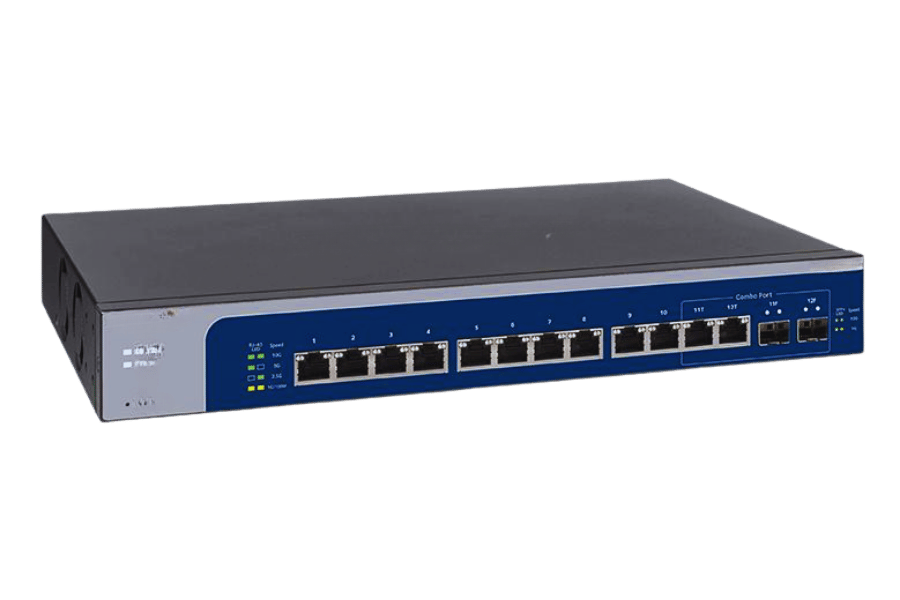
A 10 GbE switch is a type of network switch capable of data transfer via Ethernet links at a speed of 10 gigabits per second (Gbps). It facilitates the routing of data traffic between devices in a network, ensuring efficient communication over copper ports within a network. The switch connects devices like servers, storage, and networking components using high-speed ports, which makes data transmission between devices inexpensive both in terms of time and space. As such, it is critical for data processing and other operations for data centers, enterprise networks, or sophisticated home labs.
Understanding the 10 GbE switch Technology
10 GbE switches far surpass the data transfer capabilities of older Ethernet switches, capable of transmitting up to 10 gigabits of data per second. 10 GbE switches help improve network performance by allowing quicker upload and download speeds, reducing wait time, and enhancing responsiveness for applications that use significant amounts of data, including load-balanced resources, computing networks, and high-performance data repositories. Similarly, 10 GbE switches are often equipped with scalable port configurations, system resource-efficient designs, and superior management functionalities, which make them ideal to meet modern networking needs.
Key Features of a 10 GbE switch
- High-Speed Performance: Ensures fast and efficient communications for demanding technologies to be up to 10 gigabits per second. Ensuring data is transferred at a higher rate as required by the application.
- Low Latency: Set for responsive network delays in data transmission to optimize the overall network responsiveness.
- Scalability: Customized port arrangements can be set to accommodate changing network requirements, and assist in future expansions thus enabling growth.
- Energy Efficiency: High performance while having reduced power usage. Having energy saving features maintained the level of performance executed.
- Advanced Management: Streamlining the supervision of the network operations. Centered management allows VLAN and QoS support for better control.
- Reliability: Minimized downtime while ensuring stability within the critical environment where the system is placed. Ensured using robust hardware and redundancy options like 10GbE SFP modules.
Why Choose a 10 GbE network?
The 10 GbE network is ideal for an organization’s structure that demands efficiency and performance, due to its high data transfer speed, low latency, and overall network performance. It processes bandwidth expansion needs effortlessly, aiding in virtualization, large file movement, and real time data analysis. Moreover, it allows for future scenarios by extending network adaptability. The 10GbE SFP modules, specifically, make future enhancements easier. Businesses looking for maximum operational productivity and reliability will greatly benefit from the unmatched performance offered by 10 GbE.
How to Choose the Right 10 GbE switch for Your Network
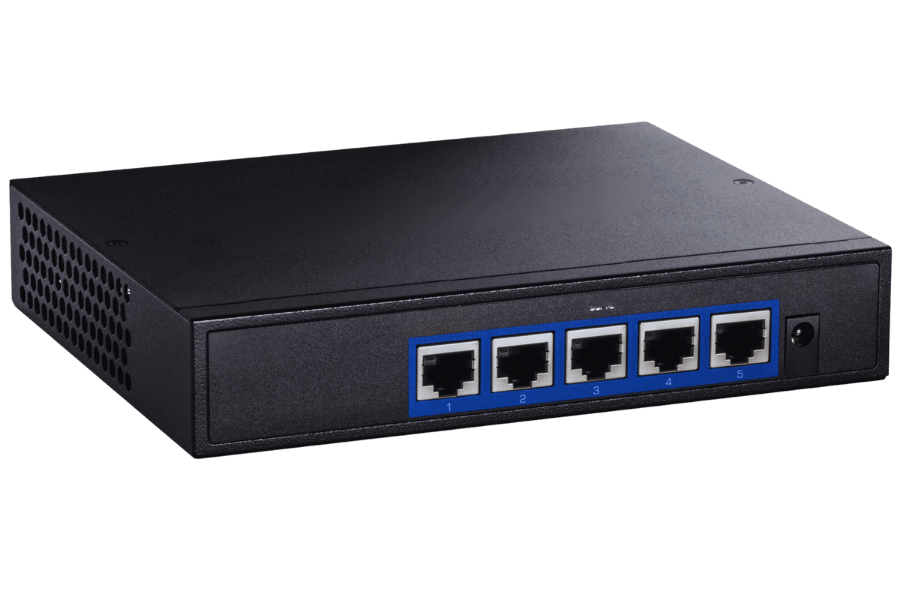
Identifying Your Network Needs and Port Requirements
For 10 GbE switches, such as those by Mikrotik, start with understanding your network’s current needs and projections. Identify the number of devices that require connectivity, ensuring that there are enough available ports to accommodate both current demands and future growth. Establish whether your network requires additional functionality, such as Power over Ethernet (PoE) for powering peripherals like IP cameras or wireless access points. If future scalability is important, select a switch that offers modularity or expansion flexibility, such as one with four SFP slots. Lastly, confirm alignment with your current infrastructure, such as cables and equipment, to ensure smooth integration and optimal performance.
Comparing 10 GbE copper vs. fiber Options
When evaluating 10 GbE copper and fiber options, these factors must be taken into consideration:
- Cost: The initial price of Copper transmission, for example, Cat6a, is lower than that of fiber. It is economical for shorter runs, up to 100 meters. On the other hand, while fiber is more expensive, it is easier to scale in the long term and has lower signal degradation over distances.
- Performance: Fiber offers the highest bandwidth and is completely immune to electromagnetic interference(EMI). Therefore, it is ideal to use in electrically noisy environments or in cases where the distance is longer than 100 meters. Copper is better suited for local and short connections in less noise-sensitive areas.
- Installation and Maintenance: Copper is easier to work with in terms of skill level and installation when compared to fiber. Fiber has a longer lifespan and is more durable, requiring fewer replacements in the long run.
- Use Case: Copper works best in situations where cable runs are short, such as in office networks or data centers. Fiber is best for extensive, high-performance data transfer between buildings or in large-scale deployments, like data centers.
The alternative between 10 GbE copper and fiber is depended on factors such as the distance of the network, budget, and power performance specifications.
The Role of Combo Ports in Flexible Deployment
Combo ports are an advanced feature on contemporary network switches that increase deployment flexibility by supporting copper and fiber on a single hardware interface. Network administrators can now adjust from a copper Ethernet connection to a fiber connection without needing to physically replace the switch, which enhances flexibility in meeting different network demands.
Cost-effectiveness is one of the main advantages of combo ports owing to their versatility in supporting multiple connections. Organizations using copper interfaces have more economical deployment options especially when dealing with short distances, and for long-range, high-speed data transmissions, fiber interfaces come into play. As an illustration, copper connections enable distances of up to 100 meters using Cat 6a cables, while fiber connections can extend to several kilometers depending on the type of optical fiber and transceivers employed.
Furthermore, combo ports aid in addressing network scalability and future expansion needs. Enterprises can start with a copper-based infrastructure and move to fiber optic links as their demand for performance or distance grows. This favors not having to entirely replace switches during upgrades, which saves considerable time and resources.
Actual use cases highlight the importance of combo ports in a hybrid setting, like in a campus network or multi-purpose buildings. Here, the combination ports facilitate integration of local devices via copper and connection to fiber backbone networks for high capacity data transport. Managed at speeds up to 10 GbE or more, these ports support increasingly intensive workloads, including cloud applications and video conferencing.
Through versatility, these combo ports add flexibility and reduced costs in the network design which is aligned with the needs of modern IT infrastructure.
What are the Benefits of a 10 GbE switch with Combo Ports?
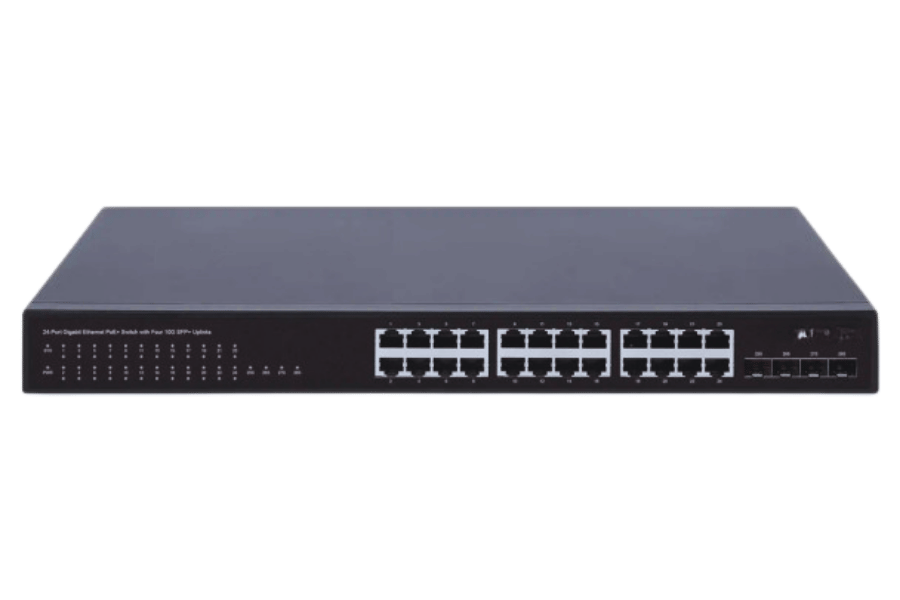
Enhancing Network Scalability and Flexibility
10GbE switches with combo ports improve the scalability and flexibility of a network by permitting the integration of various connection types like copper and fiber. Because of this flexibility, network resources can be assigned according to specific operations. For network upgrades and expansions, combo ports simplify the process because they support various types of cabling without extensive modifications to the hardware infrastructure, thus streamlining network expansion to satisfy increasing data needs.
Integration with Existing Network Environment
The combo ports support both copper and fiber connections, thus enabling them to merge effortlessly into pre-existing network environments. This dual capability allows for easy integration with legacy systems while accommodating modern technology. Their flexible approach to dealing with legacy systems mitigates disruption during upgrades and expansions, as administrators can choose the type of connection that meets the current needs of the network. This adaptability fosters resource efficiency and operational agility within diverse network configurations.
Optimizing Cost-Effective Network Solutions
Maintain focus on cost-effective network solutions by ensuring a scalable infrastructure that supports anticipated growth without excessive modifications. Use multi-purpose equipment that is compatible with both old and new systems to reduce capital expenditure. Minimize software spending by using open-source network management applications. Furthermore, constrain bandwidth tailored to business activity to optimize operational efficiency while avoiding unnecessary expenditures. Perform regular maintenance activities to reduce the risk of expensive outages and prolong the life of existing hardware.
How to Install and Upgrade to a 10 GbE Switch?
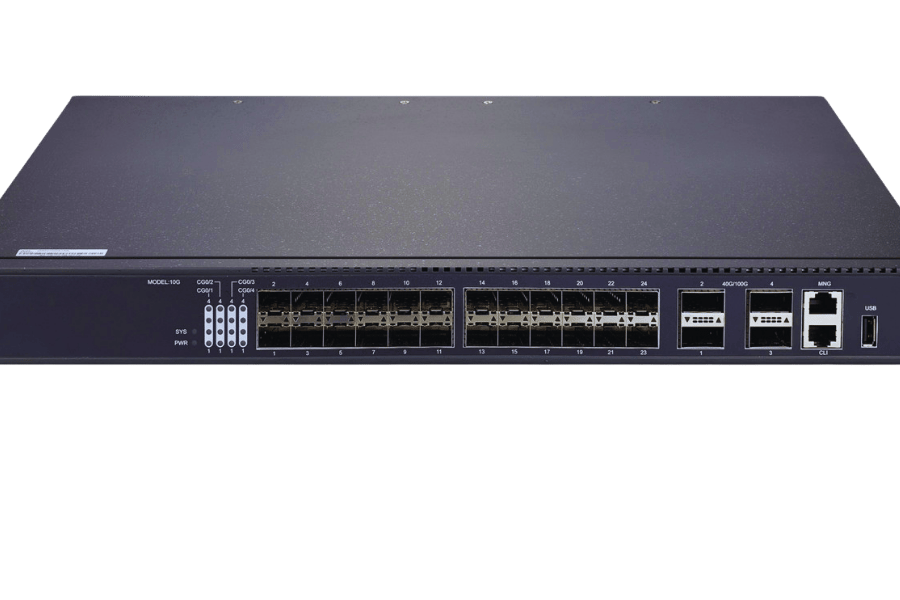
Step-by-Step Guide to Installing a 10 GbE switch
- Prepare the Equipment: Make sure the 10 GbE switch is operational via suitable ethernet devices such as Cat6a cables or higher. Ensure that connected devices support 10 GbE speeds as well.
- Plan the Network Setup: Make a list of the devices to be connected and plan a corresponding layout. Assign particular ports for every device while considering cable management.
- Position the Switch: Ensure the switch is positioned on a rack or shelf to reduce exposure to heat or dust, and so that ventilation is unhindered.
- Connect the Power Supply: Utilizing the power cable, plug the switch into a power source. Hereafter turning on the device, ensure the appropriate startup indicators are evident.
- Attach the Network Cables: Using labeled Ethernet cables for identification, connect all Ethernet cables for troubleshooting, and attach them to the switch.
- Configure the Switch: Access its management interface or proprietary desktop software, adjust settings themselves; region specific IP address, VLANs and level of security required will inform these.
- Connection Test: Ensure all populated port head-end workstations are responsive and providing values seamlessly at an appropriate speed. Activity indicators should also be present on switches while network tools should corroborate speedy performance.
- Supervise and Sustain: Periodically check the performance of the switch, update its firmware, and perform maintenance actions to help ensure long-term sustained performance.
Best Practices for Managing Cable and Ethernet Switch Setup
- Label All Cables: For easier identification, use color-coded tags or printed labels to properly label each and every cable indicating the connection for the speedier troubleshooting on adjustments.
- Organize Cabling: Correctly spaced cable racks, trays, and air-flow enabling Velcro ties help improve the accessibility and cooling around the devices, thus preventing tangling and aiding proper device airflow.
- Perform Regular Inspections: Periodic inspection for loose connections, wear and tear, or damage should be done. To ensure network reliability, faulty cables must be replaced immediately.
- Maintain Appropriate Cable Lengths: Using network topology and the location of the devices as the references, avoid excessive cable lengths to reduce interference and signal loss.
- Secure Connections: Put all cable connections which use ports firmly so that no disconnections or signal instability occurs due to signal disconnections.
- Keep Cables Away from Electrical Interference: For enhanced signal integrity, keep the routes of cables far from power lines, motors, and any other sources that emit electromagnetic interference.
- Document the Network Setup: Outdated documents can lead to more troubles hence, switching ports, cables, and devices should be documented and maintained for easy reference which ensures smooth workflow during upgrades and maintenance.
Setting up VLANs and Inter-VLAN Routing
- Configuring VLANs on the Switch: Creating the desired VLANs by allocating unique VLAN IDs can be done from the management interface of the switch. Based on the network devices, assign the corresponding ports to the respective VLANs.
- Assigning IP Addresses: Every VLAN needs to be given a distinct IP address. This helps devices within the same VLAN to communicate seamlessly.
- Enable Inter-VLAN Routing: Use a Layer 3 device like a router or Layer 3 switch to allow the communication between the different VLANs. Amend sub-interfaces for each VLAN or dedicate one interface per VLAN while ensuring appropriate IP addresses are set.
- Verify connectivity: Administer the configuration by attempting to ping devices in different VLANs and check if they can successfully cross the borders. If any endpoints confirm they cannot reach their constituents routingly, examine the VLAN configurations, or IP configurations for potential errors.
- Monitor and Maintain: Review the VLAN and associated routing performance at set intervals, checking for any issues. Adapt configurations and settings to meet the needs of a developing network, including further planned network growth and restructuring.
Common Issues and Troubleshooting for 10GbE switches
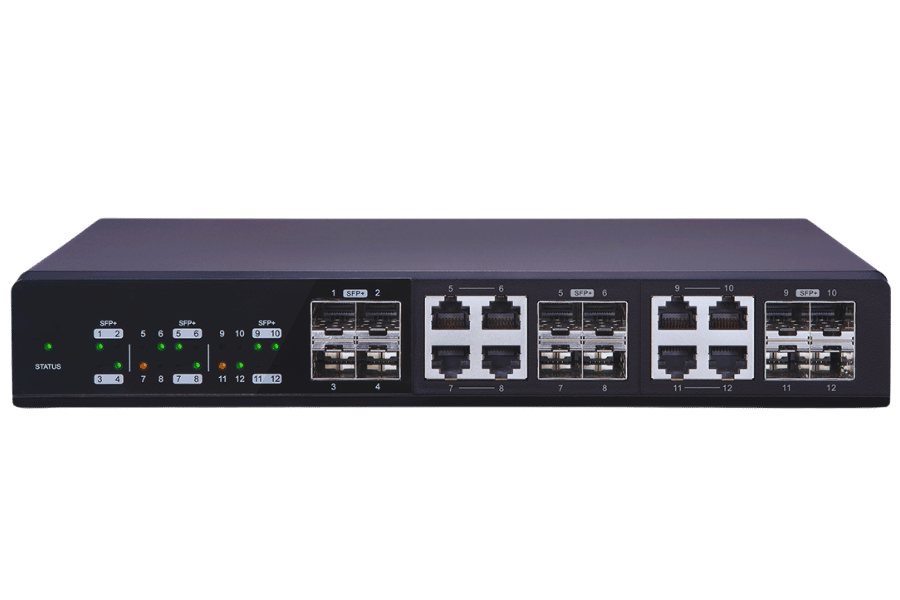
Addressing Port and Connectivity Problems
- Check Physical Connections: All sockets should be wired using suitable standards for 10GbE, such as CAT6a for copper connections and fiber optics. Any damaged or inappropriate wires must be replaced.
- Verify Port Configuration: Double-check that there are no issues concerning the port configuration, including assigned speed, duplex settings, and VLANs. Problems here can result in being able to connect but not function at the designed levels.
- Inspect Port Status: Check the switch’s management interface to view the status and port activity. Examine if any errors, such as dropped packets or collisions, occur, which indicate a malfunction or misconfiguration.
- Update Firmware: Ensure the switch is upgraded to the latest version, as updates usually fix bugs and compatibility problems.
- Test End Devices: Ensure the devices at the last point in the switch are operational and have the proper configuration, such as static IP addresses or DHCP settings.
- Enable Diagnostics: Enable other routine tests, such as loopback diagnostics and port mirroring, to isolate and identify the problem for efficient resolution.
Following this guide allows you to quickly correct port and other connectivity problems with 10GbE switches.
Resolving Speed and Transfer Speed Concerns
To resolve issues related to the speed and transfer of 10GbE switches, ensure that all peripheral devices, including those using DAC cables, are 10GbE capable. Check that the proper length and type of cables are in use, such as Cat6a or higher for copper connections and OM3/OM4 fiber for optical connections, as well as the specified class for transmission media. Also, ensure the switch is configured to the proper 10GbE port settings with the necessary auto-negotiation features enabled. Moreover, ensure that the other end devices’ network interface cards (NICs) have optimal settings and are configured to use the CIDR subnet mask to minimize bandwidth overhead. Advanced monitoring systems can also reveal performance issues related to congested bandwidth or irregular traffic flows. Meeting all the aforementioned parameters should usually resolve speed transfer concerns.
Troubleshooting Device Compatibility Issues
In resolving device compatibility problems, first verify that all devices in question use the necessary protocols and standards for communication. Examine firmware versions and upgrade them to the most recent compatible edition for the hardware in question. Ensure that device drivers are present as well as configured correctly for the operating system in use. Eliminate any discrepancies by checking device specifications against system requirements. If problems continue, refer to the manufacturer’s documentation or contact their support for further assistance.
Frequently Asked Questions (FAQs)
Q: What is a 10GbE switch and why is it important for a high-speed network?
A: A networked device like A 12-port 10GbE switch is a 10GbE (10 Gigabit Ethernet) Switch which enables data transfers at the astonishing speed of 10 gigabits per second. It is critical for high-performance networking in multi-user environments like data centers that demand high-volume traffic and minimal delays due to its latency. This device helps in achieving real-time responsiveness and network throughput.
Q: How does 10GBASE-T differ from 10GbE copper in terms of connectivity?
A: 10GBASE-T is a standard for Ethernet over copper twisted-pair cabling that enables 10GbE connections via RJ45 sockets. 10GBASE-T is capable of transmitting data across existing copper cabling infrastructure, allowing businesses to connect with devices that lack fiber optic ports. This positions 10GBASE-T as a practical alternative for retrofitting obsolete networks to 10GbE without having to cobble the walls due to extensive rewiring.
Q: What are the advantages of using PoE (Power over Ethernet) switches in 10GbE networks?
A: With PoE switches, power and data are delivered through one Ethernet cable used to connect the switches. This makes an independent power supply cut necessary for IP cameras and Wireless access points. In a 10GbE network setup, the independence of PoE will significantly reduce the number of cables required during installation and provide high data speeds during transmission.
Q: Can a 10 GbE switch be used with 1 GbE and 2.5 GbE devices?
A: Yes, several 10GbE switches are backward compatible with 1GbE and 2.5GbE devices. This adaptability offers the opportunity to upgrade a network in stages, as older, slower devices can be plugged into newer multi-speed switches. This ensures easy expansion and flexible growth of the network infrastructure.
Q: What role does VLAN functionality play in a 10GbE network?
A: VLAN (Virtual Local Area Network) functionality allows administrators to divide a single physical network into multiple logical networks, adding a layer of security and improving overall network management efficiency. In a 10GbE network, VLANs can enhance the performance of the network by optimizing the bandwidth distribution and prioritizing important traffic.
Q: What are the benefits of using SFP and SFP+ modules in Ethernet switch configurations?
A: SFP (Small Form-factor Pluggable) and SFP+ modules offer plug-and-play portability for switches, facilitating the rapid addition of fiber optic links as well as expansion into new markets. They also have 10GbE and other high-speed capabilities, enabling the seamless integration of various cables and lengths within the network architecture, thereby increasing design flexibility.
Q: In what ways do QoS (Quality of Service) elements improve overall network productivity in a 10GbE switch?
A: QoS elements ensure efficient allocation of network resources, resulting in optimal bandwidth for high-value data, such as streaming and VoIP calls. In a 10GbE switch, QoS helps preserve the dependability and operational efficiency of the network by controlling traffic congestion and optimizing delays for critical network services.
Q: What are the key considerations when choosing an unmanaged switch for a 10GbE network?
A: Check the total available 10GbE ports, integration with other devices in the network, total switching capacity, and overall configurability of the switch. Unmanaged switches work best in environments that require minimal configuration, as they are intended for basic plug-and-play setups.
Q: What is the relationship between switching capacity and the functionality of a 10GbE Ethernet switch?
A: The switching capacity of a device tells us the amount if information that it can handle at a given moment. Higher switching capacity, like 240 Gbps when compared to others, a 10GbE switch is able to offer advanced simultaneous data transfer services and high volumes of network traffic reliably.
Q: What are the considerations for adding a 10GbE switch to a NAS (Network Attached Storage)?
A: For 10GbE integration in a NAS setup, check compatibility with regards to QNAP devices that support 10GbE. Furthermore, look at the total 10GbE ports for all servers and devices that will connect and determine if PoE support or VLAN capabilities are required for better NAS performance management.
Reference Sources
1. Multi-GPU and 10GbE Switch FPGA Accelerated Deep Learning
- Authors: Tomoya Itsubo et al.
- Internet Publication Date: 1st March, 2020*
- Summary:
- The analysis focuses on a system with multiple GPUs connected through an FPGA-based 10GbE switch, evaluating its performance on various deep learning tasks. The primary focus is on the training phase of deep neural networks because it is often constrained by gradient calculation and communication delay.
- Methodology: During the GPU performance experiments, the authors implemented a backpropagation algorithm using a set of optimizers (SGD, Adagrad, Adam, and SMORMS3) on four remote GPUs and an FPGA-based switch. The optimization showed up to 3.0 and 1.25 times faster than the CPU and GPU implementations, respectively. Furthermore, the FPGA switch achieved a near-instantaneous gradient collection throughput of 98.3% for 10Gb Ethernet (Itsubo et al., 2020, pp. 102-109).
2. The Use Case of FPGA in 10GbE Switches for Aggregating Computation Results of GPUs
- Authors: Takemoto Kazuma et al.
- Published On: January 16, 2017
- Summary:
- This work examines FPGA 10GbE switches to improve the data throughput efficiency of high-performance computing systems by streamlining the aggregation processes of the computation results from GPUs.
- Methodology: The authors construct a specific use case focusing on the architecture and the qualitative performance increase achieved through FPGA-based switches in GPU clusters. Actual performance details are not provided within the summary (Kazuma et al., 2017, pp. 43–48).
3. Proxy Responses for MapReduce Delayed Task Using 10GbE FPGA Switch
- Authors: Mitsuzuka Koya et al.
- Date of Publication: January 16, 2017
- Summary:
- This MapReduce problem is addressed by the utilization of a 10GbE FPGA switch as a controller for the delayed tasks, thus improving execution time.
- Methodology: The particular implementation within this study is of a proxy response scheme in which some computation is offloaded to the FPGA switch itself to alleviate the straggler problem in a distributed computing system (Koya et al., 2017, pp. 209–214).
